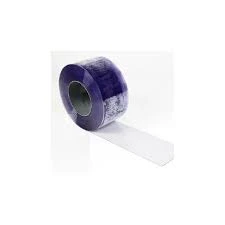- Afrikaans
- Albanian
- Amharic
- Arabic
- Armenian
- Azerbaijani
- Basque
- Belarusian
- Bengali
- Bosnian
- Bulgarian
- Catalan
- Cebuano
- Corsican
- Croatian
- Czech
- Danish
- Dutch
- English
- Esperanto
- Estonian
- Finnish
- French
- Frisian
- Galician
- Georgian
- German
- Greek
- Gujarati
- Haitian Creole
- hausa
- hawaiian
- Hebrew
- Hindi
- Miao
- Hungarian
- Icelandic
- igbo
- Indonesian
- irish
- Italian
- Japanese
- Javanese
- Kannada
- kazakh
- Khmer
- Rwandese
- Korean
- Kurdish
- Kyrgyz
- Lao
- Latin
- Latvian
- Lithuanian
- Luxembourgish
- Macedonian
- Malgashi
- Malay
- Malayalam
- Maltese
- Maori
- Marathi
- Mongolian
- Myanmar
- Nepali
- Norwegian
- Norwegian
- Occitan
- Pashto
- Persian
- Polish
- Portuguese
- Punjabi
- Romanian
- Russian
- Samoan
- Scottish Gaelic
- Serbian
- Sesotho
- Shona
- Sindhi
- Sinhala
- Slovak
- Slovenian
- Somali
- Spanish
- Sundanese
- Swahili
- Swedish
- Tagalog
- Tajik
- Tamil
- Tatar
- Telugu
- Thai
- Turkish
- Turkmen
- Ukrainian
- Urdu
- Uighur
- Uzbek
- Vietnamese
- Welsh
- Bantu
- Yiddish
- Yoruba
- Zulu
curtain wall
The Evolution and Impact of Curtain Walls in Modern Architecture
Curtain walls, a hallmark of modern architectural design, have transformed the aesthetics and functionality of buildings worldwide. These non-structural cladding systems, which are typically made of lightweight materials like glass, metal, or stone, are attached to the building's framework, allowing architects to achieve striking visual effects while adhering to safety and performance standards. This article delves into the evolution, benefits, and challenges of curtain walls in contemporary architecture.
Historical Context
The concept of curtain walls dates back to the early 20th century. The first significant implementation of this design was seen in the construction of the General Motors Building in New York City in 1968. However, the roots of the curtain wall can be traced even further back to the 19th century, with the emergence of iron and glass technologies during the Industrial Revolution. The Crystal Palace in London, built in 1851, exemplified the use of glass as a structural and aesthetic element, paving the way for future innovations in building facades.
As urbanization surged in the 20th century, architects sought ways to maximize natural light and create more usable interior spaces. Curtain walls became a popular solution, allowing for expansive glass surfaces without the need for extensive structural supports. This design philosophy culminated in iconic skyscrapers, such as the Lever House in New York City, which showcased the aesthetic potential of glass and aluminum curtain walls.
Benefits of Curtain Walls
The advantages of curtain walls extend beyond their striking appearances
. One of the primary benefits is energy efficiency. Modern advancements in glass technology have led to the development of double or triple-glazed units that significantly reduce heat transfer. By utilizing low-emissivity (low-E) coatings, curtain walls can reflect solar radiation while maintaining transparency, resulting in reduced energy costs for heating and cooling.Another benefit is the flexibility in design that curtain walls offer. Architects can experiment with various materials, colors, and textures, creating unique facades that reflect the building's purpose and context. This versatility allows for a creative response to the surrounding environment, enabling structures to blend harmoniously with their settings or stand out as focal points in urban landscapes.
curtain wall

Curtain walls also enhance the interior experience. Large glass panels allow for abundant natural light, which is known to positively impact occupant wellbeing and productivity. The connection to the outdoor environment creates a sense of openness and expands the visual space within interiors, making smaller environments feel larger and more inviting.
Challenges and Considerations
Despite their many benefits, curtain walls also pose several challenges. One significant concern is water infiltration. Without proper design and installation, curtain walls can become susceptible to leaks, leading to water damage and mold growth. Therefore, architects and engineers must collaborate closely to ensure that proper drainage and sealing techniques are employed.
Another challenge is the structural dependency on the primary building framework. While curtain walls are lightweight, they must still be adequately supported to withstand wind loads, seismic forces, and other environmental factors. This necessitates a thorough understanding of structural engineering principles during the design process, often requiring advanced computer simulations and modeling.
Additionally, as climate awareness grows, the environmental impact of materials used in curtain walls is becoming a focal point of discussion. Sourcing sustainable materials, maximizing energy efficiency, and implementing recycling practices have become essential considerations in contemporary architectural design.
Conclusion
Curtain walls symbolize the evolution of architectural design, blending aesthetics, functionality, and environmental consciousness. As technology continues to advance, the possibilities for innovations in curtain wall systems expand, offering architects the tools to create sustainable and visually stunning buildings that enhance urban landscapes. While challenges remain, the ongoing dialogue around their design and implementation reflects a commitment to creating spaces that foster wellbeing and harmony with the environment. As we look to the future, the curtain wall stands not only as a testament to modernity but as a canvas for ecological and cultural expression in architecture.
-
Industrial Strip Curtains - Durable PVC & Plastic Solutions for Industrial DoorsNewsJun.24,2025
-
PVC Curtain Strip – Durable Standard PVC Strips for DoorsNewsJun.10,2025
-
PVC Strip Curtain – Durable & Transparent Plastic Strips for Industrial Use Affordable PricesNewsJun.10,2025
-
Clear Plastic Door Curtains Durable & Insulating VisibilityNewsJun.09,2025
-
Commercial Strip Curtains Energy Savings & Durability for Industrial UseNewsJun.09,2025
-
Anti-Cold PVC Strip Curtains Thermal Insulation & Energy Saving SolutionsNewsJun.09,2025



